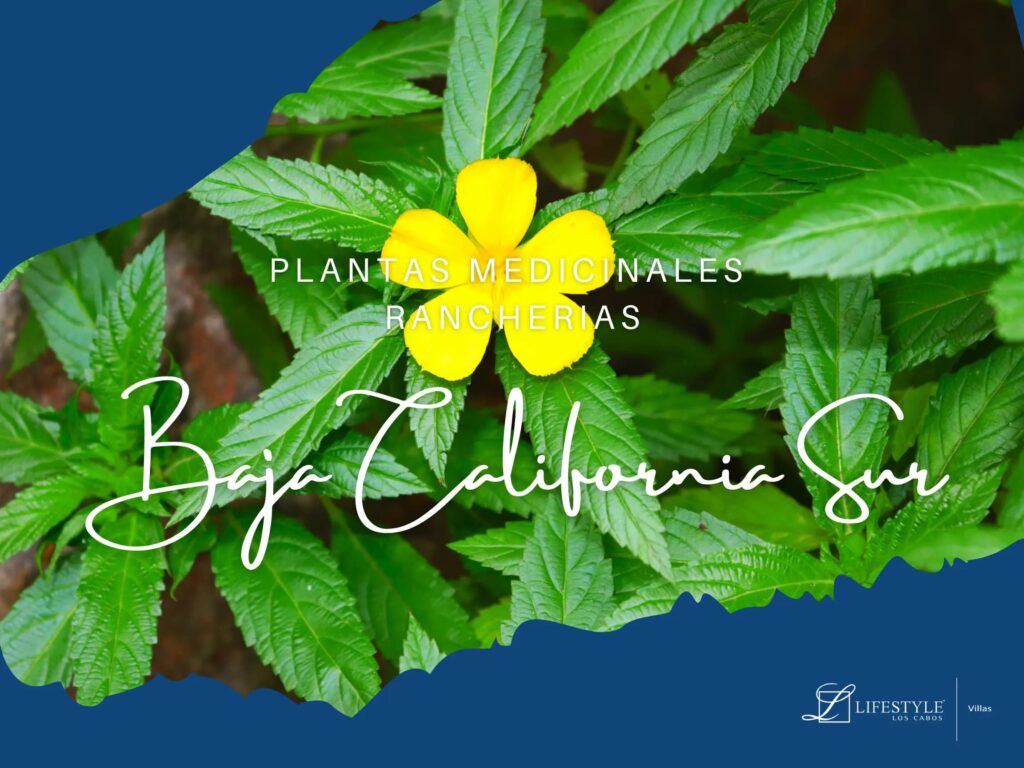Today, the scientific community can provide answers to many of the practices that have been practiced for decades in the ranches of Baja California Sur. Our ancestors have used medicinal plants for many ailments, conditions, or simply relaxation.
Ranchers have known how to use all the plants that nature gave them, creating true “living pharmacies” in their ranches. This means having on hand the leaves that provided them with benefits and peace of mind when they were ill, since most of these ranches were quite far from a health center.
These practices continue today, especially with recreational teas. Much of the knowledge is passed down from grandparents to children and grandchildren, thus continuing the herbal customs that help preserve this rich and practical knowledge.
In a research article published in April 2018 by José Luis León in Acta Botánica Mexicana, together with CIBNOR, the Autonomous University of Sinaloa, and the Faculty of Agronomy, studies were conducted that demonstrated that numerous plants harvested abundantly in the Baja California Sur area provide significant health benefits.
The study area was the Sierra La Laguna Biosphere Reserve and the San Blas-Cacachilas Community, located at the southern tip of the Baja California Peninsula, in the mountainous region of Los Cabos and Baja California Sur.
Here, a dry tropical climate predominates, with temperatures averaging 22-24°C.
The studies were conducted by collecting information through surveys of various ranchers in different areas within the border mentioned above.
Questions were asked such as: What plants do you use to prepare infusions that are used only for their smell or flavor and not for medicinal purposes? What medicinal uses does it have? What are your favorite teas?
The plants most used by ranchers, according to these questions, were: black damiana, ash damiana, daisy, wild anise, confit, deer herb, peyote, Brazil nut, cherry, firewood, and pine.
It should be noted that Damiana was the most consumed tea, both in terms of preference and cultural value, in both areas. This plant has become famous for its aphrodisiac properties, but it’s worth noting that its benefits go far beyond that; it’s also used for the treatment of ulcers, as a diuretic, to balance blood sugar levels, and can also act as an antibacterial.
Deer herb (Porophyllum gracile) is a species used for a wide range of ailments, according to ranchers. The most common uses are to treat flu symptoms and cough suppressants, as well as a muscle relaxant and cramp preventer.
Due to the hard work performed on the ranches and the long workdays, considerable physical effort is required. These herbs are the perfect complement to cope with the harsh summer sun and the low temperatures that can occur in the mountains during winter.
Surveys have shown that many of these herbs are often drunk at the end of the workday and/or after dinner.
The daisy (Aloysia barbata) and the lantana velutina (Lantana velutina) were the plants most commonly used for flu-like symptoms.
Peyote (Pellaea ternifolia) is widely used as a muscle relaxant; the ranchers were very clear in choosing this herb as one of their favorites when finishing their work, as it helps them relax and soothe their muscle pain for the next day.
Another species that the scientific community has significantly studied is the red lomboy (Jatropha vernicosa). An infusion is extracted from its bark to treat serious illnesses such as cancer, and its sap is used to heal wounds. It is also used as a tea for the treatment of serious diseases such as cancer. Its sap is also used to heal wounds. It also has a significant concentration of polyphenols and flavonoids, which help generate antioxidant and anti-inflammatory activity. Scientist Dr. Martha Reyes Becerril shares the importance of the community embracing science and using it to their advantage. Her studies with this plant have influenced the decision-making of all the inhabitants of this region, enabling them to truly understand the benefits of the plants that live there.
A fundamental fact is that, within the cities of the state of Baja California Sur, there are very few places where this tree can be found. A curious fact is that when the sap falls to the ground, it turns Red.
Learn more about Baja California Sur’s herbal traditions and native plants by visiting The Native Flora of Los Cabos.
Visitors to Baja California Sur can explore these herbal traditions while enjoying the region’s stunning beaches and landscapes. Staying in a Cabo San Lucas vacation villa provides a relaxing base to discover both the coastal beauty and the mountain communities where these plants thrive.

